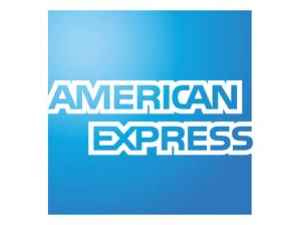Discover, American Express, Visa, Mastercard
What Is the Difference Between Discover and American Express and Visa and Mastercard?
As a merchant service provider and payment gateway, PSP eDataPay is frequently asked about fees, which cards they should accept, and whether or not they should offer cash discounts. In many circumstances, the merchant is the one who pays for everything and is the only one who can lose money and be held liable.
This is why we believe it would be a good topic for retailers to learn about and comprehend the various digital card payments that are accessible today.
Discover and American Express are fundamentally different from Visa and Mastercard.
Discover and AmEx issue cards, provide a digital number ID for cards not present, and process transactions, allowing them to take a larger percentage of fee revenue.

Visa and Mastercard process credit card transactions but do not issue credit cards themselves. Although your card may read “Visa” or “Mastercard,” it was issued by a bank, such as Chase, Capital One, Citi Bank, You lack a Visa or Mastercard account. You have a bank account, which receives your payments, sends you statements, and provides you with rewards, among other services.

By contrast, Discover and American Express conduct transactions and issue their own cards. You can open an account with either Discover or American Express.
Most consumers are unconcerned about any of this. In the eyes of the cardholder, the change is almost imperceptible. But it’s a major matter behind the scenes, affecting how credit card transactions are handled and how transaction fees are paid and received. Discover and American Express can increase their part of the fee money by issuing credit cards and processing transactions.
Who’s involved, is the main question. Why is this the case?
There are multiple processes between your card passing through the scanner and the charge appearing on your statement when you use a credit card. Multiple people, including you, are involved in these phases, many of which are instantaneous. The cardholder is one of the participants in a typical transaction. This is the one who makes credit card purchases and pays the bill.
The issuer is the financial institution that issues the card to the cardholder. The issuer is in charge of the card account.
The merchant: A retailer, a service provider, or any other person or entity that accepts credit card payments.
The bank: of the merchant: This bank, sometimes known as the “acquirer,” provides the merchant with card-accepting equipment. Card transaction funds are placed into the merchant’s account.
The payment network: This is the middleman who handles the transaction. It confirms the card’s validity with the issuer, then ensures that the charge is credited to the correct cardholder and that payment reaches the merchant’s bank.

Of course, merchants are unable to work directly with each and every credit card issuing bank. Because there are thousands of issuers, this would be impossible. Instead, merchants interact with Visa, Mastercard, Discover, and American Express, which are the four major payment networks. A retailer only needs a contract with Visa to take Visa cards, regardless of issuer, and Visa will manage all communication between the store and the issuing banks.
The Fees are at the heart of the business modal with this digital payment.
The entire system is funded by fees levied on every credit card transaction. Merchants pay these fees and, in most cases, pass them on to customers in the same way that they pass on other operating costs – in the form of higher pricing. These fees are split between the issuer, the merchant’s bank, and the payment network, who are all involved in the transaction. (Some of this money is returned to the cardholder via rewards cards.)
Here’s where the distinction becomes clear:
Only Visa and Mastercard are accepted as payment networks. Banks – big ones like Chase, Citi, Bank of America and Wells Fargo, as well as smaller ones — issue cards with their branding. • Discover and American Express are both payment networks and issuers (although some of their cards might also be issued by banks; Wells Fargo, for example, has offered several American Express cards).
Discover and American Express simplify the transaction process, decrease fees, and earn more fees than they would otherwise by managing their own payment networks and issuing their own cards. Despite the fact that their networks are costly to put up and operate, the additional revenue balances those expenditures.

